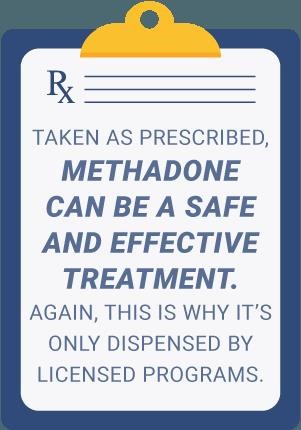Methadone Clinic Moraga CA
Home
Best Methadone Clinic Moraga CA Info
This, in turn, increases the possibility of adverse reactions and toxicity. Methadone has been shown to reduce neuropathic pain in rat models, primarily through NMDA receptor antagonism. These particles cannot be filtered out before injection, and will accumulate in the body over time, especially in the lungs and eyes, producing various complications such as pulmonary hypertension, an irreversible and progressive disease.[57][58][59] The formulation sold under the brand name Methadose (flavored liquid suspension for oral dosing, commonly used for maintenance purposes) should not be injected either.[60] While it has been done in extremely diluted concentrations, instances of cardiac arrest have been reported, as well as damaged veins from sugars (even sugar-free syrups may cause this damage due to the presence of similarly-damaging artificial sweeteners).[citation needed] U.
Opioid antagonists should not be administered in the absence of clinically significant respiratory or cardiovascular depression. An important part of treatment for addiction is counseling. The T3 Methadone Management Software package includes initial installation of hardware and software, as well as thorough documentation and training of all staff members. Methadone users can reduce the severity of constipation by eating a high-fiber diet, getting regular exercise, and making a concerted effort to avoid dehydration.
More Details About heroin to methadone

Here are Some Even more Info on methadone used for pain management Moraga CA
Glutamate is the primary excitatory neurotransmitter in the central nervous system. People sometimes feel “bone ache” during the first week of methadone maintenance treatment — but what they are actually feeling is some level of opiate withdrawal symptoms, which they are misattributing to the methadone. A medical examination is given prior to administration of the methadone, and new patients are often tested for certain conditions which are known to be prevalent in addict populations, such as HIV, hepatitis, and tuberculosis.
Extra Resources For
Methadone may cause a life-threatening heart rhythm disorder. Our clinic treatment values are to: - SUPPORT the recovery, stabilization and well-being of patients as they re-integrate into their communities of choice, families, and/or support systems; - ENHANCE and promote the quality of life for all patients served through a harm reduction model; - REDUCE symptoms associated with opioid use and dependency and build individual resilience as part of a relapse prevention strategy; - TEACH and model ways to help patients restore and/or improve their daily functioning and life skills; Our Mission: The primary goal and objective of the CBHC Program is to reduce harms associated with illicit drug use by providing equitable access to medication - assisted treatment. Where to Look On-line access to providers and their services is a good place to start exploring your options. Cessation of chronic pain therapy: -In physically-dependent patient: Gradually reduce dose every 2 to 4 days Cessation of opiate-dependence therapy: -There is considerable variability in the rate at which patients taper off; abrupt discontinuation is not advised. -Dose reductions should generally be in increments of less than 10% every 10 to 14 days. For Short-Term Detoxification For patients preferring a brief course of stabilization followed by a period of medically supervised withdrawal, it is generally recommended that the patient be titrated to a total daily dose of about 40 mg in divided doses to achieve an adequate stabilizing level. Other adverse reactions include the following: (listed alphabetically under each subsection) Body as a Whole: asthenia (weakness), edema, headache Cardiovascular:(also see WARNINGS: Cardiac Conduction Effects): arrhythmias, bigeminal rhythms, bradycardia, cardiomyopathy, ECG abnormalities, extrasystoles, flushing, heart failure, hypotension, palpitations, phlebitis, QT interval prolongation, syncope, T-wave inversion, tachycardia, torsade de pointes, ventricular fibrillation, ventricular tachycardia Digestive: abdominal pain, anorexia, biliary tract spasm, constipation, dry mouth, glossitis Hematologic and Lymphatic: reversible thrombocytopenia has been described in opioid addicts with chronic hepatitis Metabolic and Nutritional: hypokalemia, hypomagnesemia, weight gain Nervous: agitation, confusion, disorientation, dysphoria, euphoria, insomnia, seizures Respiratory: pulmonary edema, respiratory depression (see WARNINGS: Respiratory Depression) Skin and Appendages: pruritis, urticaria, other skin rashes, and rarely, hemorrhagic urticaria Special Senses: hallucinations, visual disturbances Urogenital: amenorrhea, antidiuretic effect, reduced libido and/or potency, urinary retention or hesitancy Maintenance on a Stabilized Dose During prolonged administration of methadone, as in a methadone maintenance treatment program, there is usually a gradual, yet progressive, disappearance of side effects over a period of several weeks.
Below are Some More Resources on Moraga CA
Usual Adult Dose for Opiate Withdrawal For detoxification and maintenance of opioid dependence, the drug should be administered in accordance with the treatment standards cited in 42 CFR (Code of Feral Regulations) Section 8. LOL. (Sorry, had to throw in some comic relief here. Updated March 24, 2018 in Methadone 16 REPLIES SHARE RSS methadone different liquid color orange I usually take methadone i get from the clinic but i wasted a bottle with dirty water out of the sink.. To understand how methadone affects the body, it is important to understand what exactly methadone is. Methadone maintenance programs will be life-long therapy for most patients, but can allow patients to lead healthy lives. How many mg of xanaic would make you comfortable coming of 55 mg of methadone? Not having to deal with the clinic beauracreacy, also lifted my spirits for sure. I was 50 and they were treating me like a 5-year-old," she claimed. "They had power over my whole life.
Click Here for More Information
Previous Next
You may also like:
Methadone Clinic Fremont OH
Methadone Clinic Westmont IL
Methadone Clinic Wheaton MD
Methadone Clinic Bellevue NE
Methadone Clinic Erlanger KY